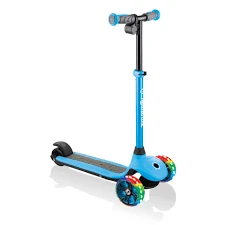calibrate self balancing scooter
Calibrating Your Self-Balancing Scooter A Guide for Optimal Performance
Self-balancing scooters, commonly known as hoverboards, have gained immense popularity over recent years as a fun and efficient mode of transportation. While these devices come equipped with advanced technology to enable balance and motion, proper calibration is essential to enhance their performance and longevity. In this guide, we’ll provide an overview of how to calibrate your self-balancing scooter effectively.
Understanding Calibration
Calibration is the process of adjusting the hoverboard’s internal sensors to ensure it operates in accordance with the manufacturer's specifications. It helps align the sensors that measure tilt and equilibrium, ensuring that the scooter responds correctly to your movements. An improperly calibrated scooter may lead to erratic behavior, such as wobbling or failing to respond to the rider's weight shifts, which can be unsafe.
Why Calibration is Important
1. Safety Ensuring your hoverboard is calibrated correctly minimizes the risk of accidents. An uncalibrated scooter may cause sudden stops or unexpected acceleration, posing a danger to the rider and others nearby.
2. Performance Calibration can significantly improve how your scooter handles. A well-calibrated device will respond more smoothly to your commands, providing a better overall riding experience.
3. Battery Efficiency Calibration can help optimize battery usage. When the sensors are correctly aligned, the scooter can more accurately assess energy needs, potentially extending battery life.
How to Calibrate Your Self-Balancing Scooter
1. Preparation Start by finding a flat, smooth surface. Remove any obstructions and ensure the area is safe for calibration. It’s best to calibrate your scooter when it's turned off.
calibrate self balancing scooter

2. Powering Up Turn on the scooter while it’s on the flat surface. Wait for the LED lights to stabilize, indicating that the device is ready for calibration.
3. Positioning Make sure the scooter remains perfectly upright. Any tilt or imbalance might cause incorrect calibration. You may need a second person to hold the scooter, or you can use a stable surface to rest it against.
4. Calibration Mode To enter calibration mode, refer to your user manual, as the method can differ between brands. Typically, this involves pressing the power button a certain number of times or holding it down for several seconds. Look for LED indicators which will flash differently when in calibration mode.
5. Waiting Period Once in calibration mode, allow the scooter to adjust its internal sensors. This usually takes a few seconds. The LED lights may blink or change color to indicate successful calibration.
6. Testing After calibration is complete, turn off the scooter and then power it back on. Test the responsiveness by stepping on and riding it gently. If it feels stable and responsive, the calibration was successful.
Regular Maintenance
It’s important to periodically check and recalibrate your self-balancing scooter, especially if it has been dropped or if its behavior has changed. Regular maintenance not only ensures your safety but also enhances the scooter's performance over time.
Conclusion
Calibrating your self-balancing scooter is a straightforward process that can provide significant benefits in terms of safety, performance, and efficiency. By taking the time to ensure your hoverboard is calibrated correctly, you can enjoy a smoother, safer ride. Remember to consult your owner's manual for specific instructions related to your model, and happy riding!
-
Understanding Voltage in Battery for Children's Motorized CarNewsJun.05,2025
-
Safety Features to Look for in an Electric Car for KidsNewsJun.05,2025
-
How to Teach Your Child to Ride a Kids MotorcycleNewsJun.05,2025
-
How to Prevent Falls on a Balanced ScooterNewsJun.05,2025
-
How to Maintain Your 3 Wheeled Scooter for LongevityNewsJun.05,2025
-
Best Motorcycle Scooters for Urban CommutingNewsJun.05,2025
